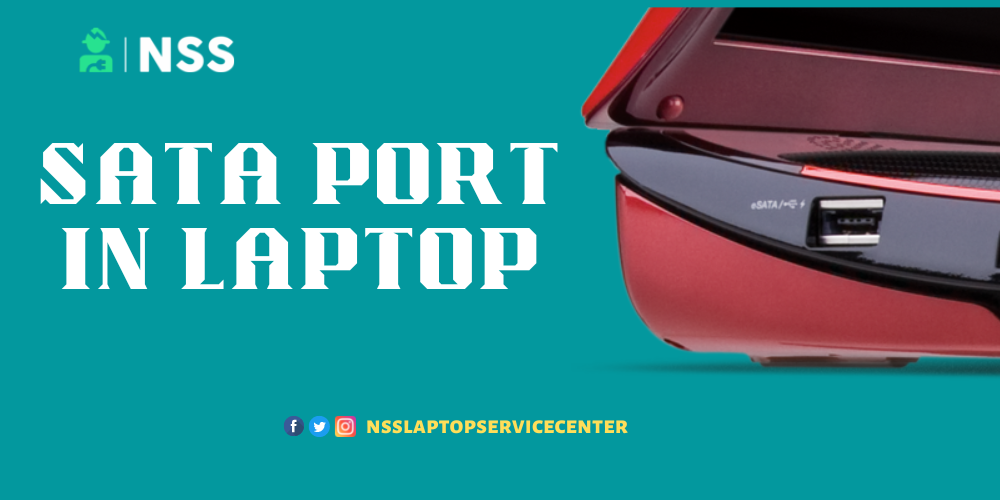
What is a SATA Port In a Laptop
You can be sure that any desktop or laptop you've had in the previous 15 years was equipped with Serial ATA (SATA) compliant hardware. Until recently, practically all of them utilized SATA, whether optical drives, SSDs, or hard drives (HDDs). Describe SATA. It is, in essence, how practically all storage-related connections to your motherboard are made.
Data and power
More recent standards are also accessible for high-speed drives, so that isn't always the case. SATA, however, continues to be a significant participant alongside PCIe and NVMe, particularly when it comes to larger-sized HDDs and SSDs.
SATA Cable
Although a wide range of computer products are called SATA devices, they are given that name because they use the SATA interface. In other words, your PC connects to the disc and the motherboard via two SATA connections.
Even though SATA connectors have just one port, SATA has two ports: the data and power connectors. The former is the more extended 15-pin connector, the taller "L," while the latter is the shorter, L-shaped, seven-pin connector.
The bases of each connector's "L" form usually face one another on the drives for which they allow connections. The wires that connect to them can be used to distinguish them in addition to length. The SATA power connector extends from its head to numerous thin, rounded wires of various colors. Still, the SATA data cable often consists of solid plastic and expands into a flat, single-band line.
Generations of SATA
Although most PCs have utilized SATA devices in recent years, there are a few other noteworthy varieties. 2000 SATA was initially made available, replacing PATA's outdated ribbon cables. In 2003, 2004, and 2008, it underwent revisions that brought SATA to version three, also known as SATA III or 3.0. These standards did not alter the physical appearance of the SATA connector itself, but they did boost performance and included further capabilities to enable quicker and more dependable storage drives. Even though SATA III and its five upgrades, namely 3.1 through 3.5, have been used the most frequently nowadays, SATA III is still the most popular SATA interface.
With Revision 3.1, SATA concentrated on enhancing SSD performance, enabling host PCs to determine the hardware devices' capacities, and adding the Universal Storage Module connector, which made USBs viable (USM).
The USM was slimmed down for Revision 3.2; micro SSDs were used to reduce the size of the storage components, USB 3.0 connections were added, and power consumption for continually operating devices was decreased. With staggered startup options, an activity indicator, and improved data center maintenance and hard drive disc capacity, revision 3.3 gave consumers more freedom and flexibility.
Revision 3.4 of SATA from 2018 provided enhancements like SATA device temperature monitoring, writing crucial cache data, and improved manufacturer compatibility while negatively influencing your PC's performance. The 2020 upgrade to revision 3.5 decreases latency to improve performance and gives the host device better control over the sequencing of commands.
Over the years, there have been a few additional SATA interfaces, such as the 2011-introduced mSATA for laptop drives. The M.2 standard was that technology's most recent iteration. For increased performance, the quickest SSDs now use PCI Express connections instead of the mSATA interface.
SATA Express was first made available in 2013 with SATA 3.2, enabling cross-compatibility with SATA III and PCI Express drives. Even though eSATA provided external discs with SATA-like speeds, it wasn't a popular choice. Most modern high-speed external drives connect through USB 3.0, frequently using the Type-C connector standard.
Also Read: What Can You Plug Into An HDMI Port On A Laptop
Also Read: Best Ways To Earn Money With Laptop
Conclusion :
I won't say much as the blog has informed you about the Sata Port On Laptop. It is an easy process, and you can use it for various purposes.
Frequently Asked Questions
Popular Services
- MacBook Battery Replacement Cost
- HP Printer Repair in Delhi NCR
- Dell Laptop Repair
- HP Laptop Repair
- Samsung Laptop Repair
- Lenovo Laptop Repair
- MacBook Repair
- Acer Laptop Repair
- Sony Vaio Laptop Repair
- Microsoft Surface Repair
- Asus Laptop Repair
- MSI Laptop Repair
- Fujitsu Laptop Repair
- Toshiba Laptop Repair
- HP Printer Repair Pune
- Microsoft Surface Battery Replacement
- Microsoft Surface Screen Replacement




